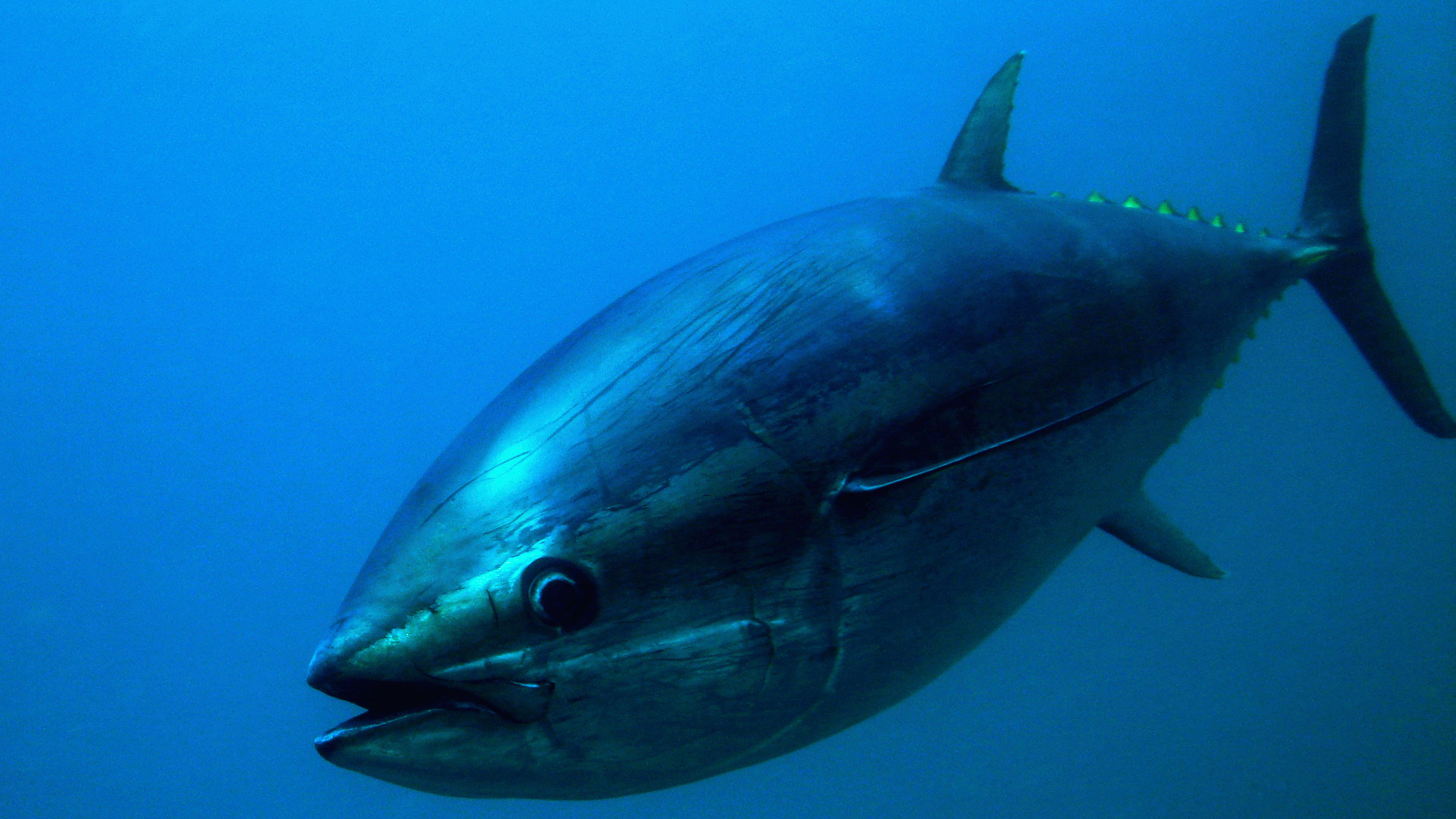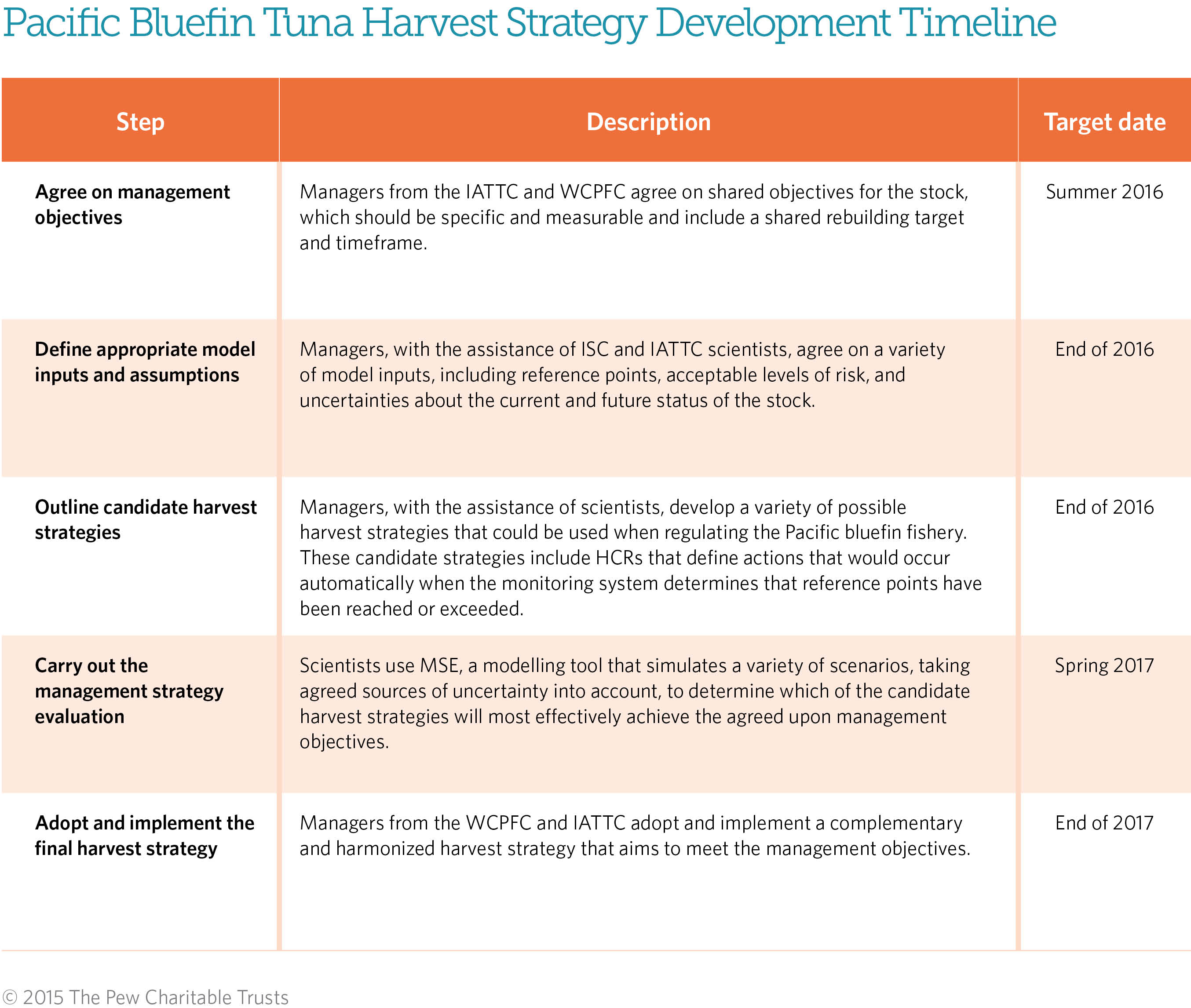Implementing an Ocean-Wide Harvest Strategy for Pacific Bluefin Tuna
 © iStock
© iStockA closeup of a bluefin tuna.
Years of overfishing have left the Pacific bluefin tuna population at just 4 percent of its original size, and catch limits are still set above scientifically recommended levels.
If Pacific bluefin are to recover, a new, modern, ocean-wide management system must be put in place without delay. Such a system, including a harvest strategy combined with the best-available science and strict enforcement, will provide the fishery with a clear and transparent path toward ending overfishing and rebuilding the species. By working together, managers and scientists have the opportunity to implement a harmonized harvest strategy across the Pacific that will ensure recovery and lead to a healthy bluefin population and fishery.
Managing such a sweeping fishery presents several challenges. Pacific bluefin are highly migratory, crisscrossing the ocean, so the fishery is managed by both the Western and Central Pacific Fisheries Commission (WCPFC) and the Inter-American Tropical Tuna Commission (IATTC). Currently, there is little discussion or coordination between them. Despite significant overlap in membership, the commissions have acted independently, without a common plan or targeted outcome. For most of the fishery’s history, stretching back into the 19th century, no catch limits have been enacted on either side of the Pacific, which has led to decades of overfishing. Even though limits were recently put in place for some parts of the fishery, there is still no ocean-wide rebuilding target, no harmonized quota, and no shared long-term management plan.
An ocean-wide harvest strategy will harmonize management and has many advantages over the traditional annual or semi-annual quota-setting process. First, it includes agreement on specific, measurable, and longterm objectives for the population, as well as target and limit reference points consistent with those objectives. Second, it includes monitoring measures and assessment methods to determine the status of the population relative to those points. Third, it includes a harvest control rule (HCR) that sets out clear steps to be taken when the reference points are reached or exceeded. Fourth, a management strategy evaluation (MSE) tool can be used to assess the effectiveness of a variety of candidate strategies and identify the one most likely to meet the agreed upon goals. Finally, the harvest strategy process involves input from managers and scientists, and once adopted, will result in a more automated, transparent, predictable—and effective—management system that moves away from contentious and onerous quota-setting debates.
Setting up and implementing an ocean-wide harvest strategy for Pacific bluefin tuna is the best way to ensure that the species will recover from its current severely depleted state, and it requires commitment from all involved parties. The WCPFC and IATTC should begin this joint process without delay. They should incorporate the expertise of their respective scientific staffs, the scientists of the International Scientific Committee for Tuna and Tuna-like Species in the North Pacific Ocean (ISC), and external authorities on harvest strategies and management strategy evaluation. A list and description of the key steps of the harvest strategy process can be found on the next page.
 © 2009 National Geographic
© 2009 National Geographic





